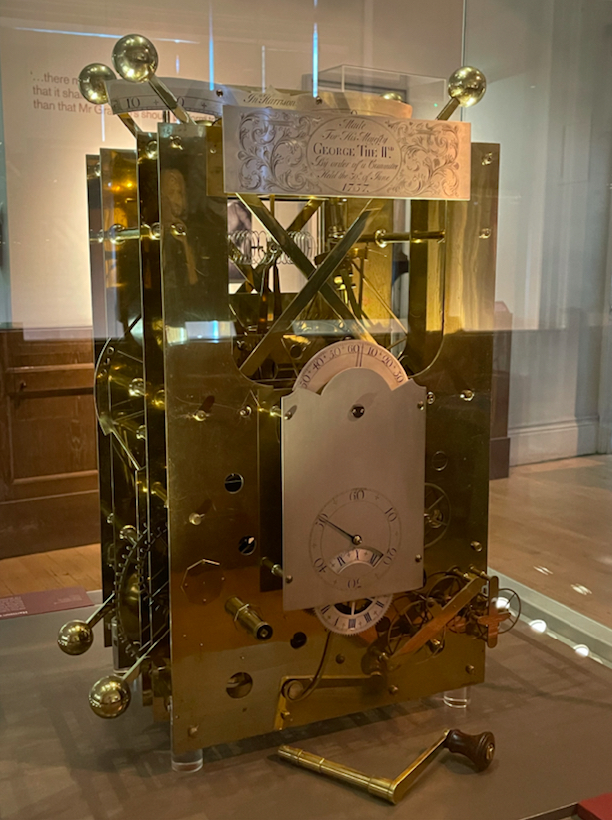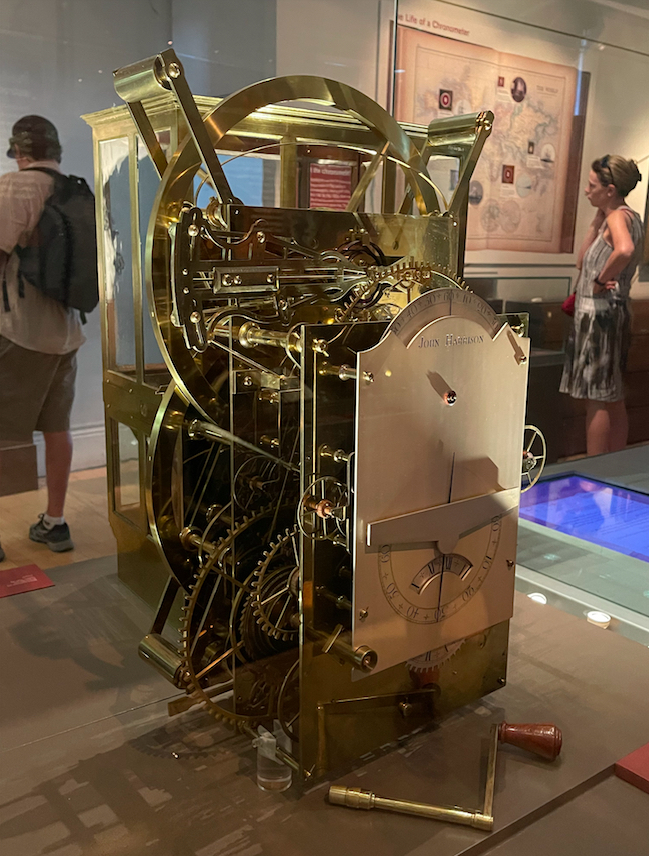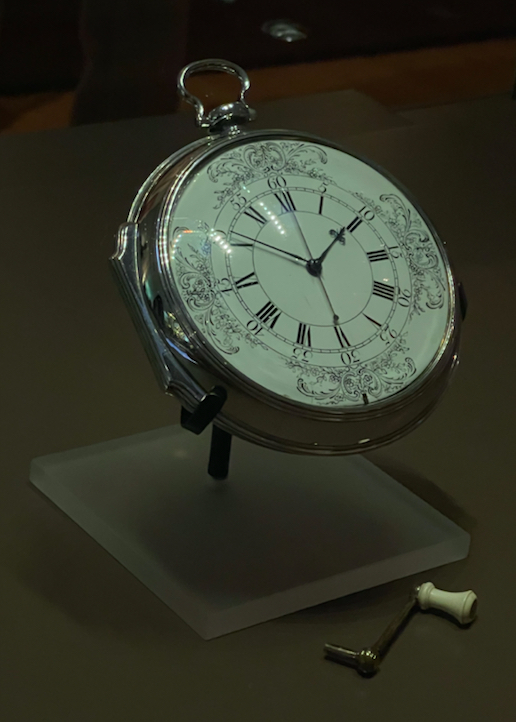Actual clockwork – the works that solved the problem of how to sail across an ocean safely by keeping proper time for navigation. And, these clocks from the 1700’s are still ticking!
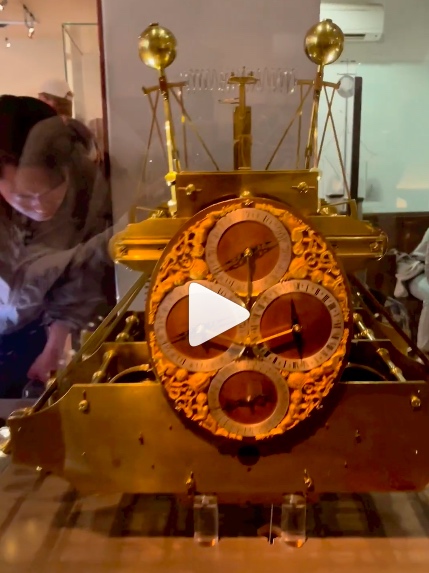
I visited the Royal Observatory in Greenwich, England this month. Been on my list since I first read “Longitude” by Dava Sobel, about the English crafstman and inventor John Harrison. I’ve written about it before, but now I’ve seen it.
“You have to see it to understand. Now I’ve seen it.”
The Dragon Queen, Game of Thrones
(I also saw the dragon motifs in Wales, and got some great drag swag, but that’s another story from the same trip.)
Harrison’s clocks revolutionized sea travel and have withstood the test of time. It took him most of his adult lifetime, partially because he was a self-sabotaging perfectionist, but he solved the problem of his time: how to determine longitude at sea. His timepieces were the first chronometers, or very accurate time pieces that would work for extended sea voyages without adjustment or maintenance. And, he won the incentive prize offered by Parliament: 20,000 pounds. That translates into roughly $7 million when adjusted to today’s value.
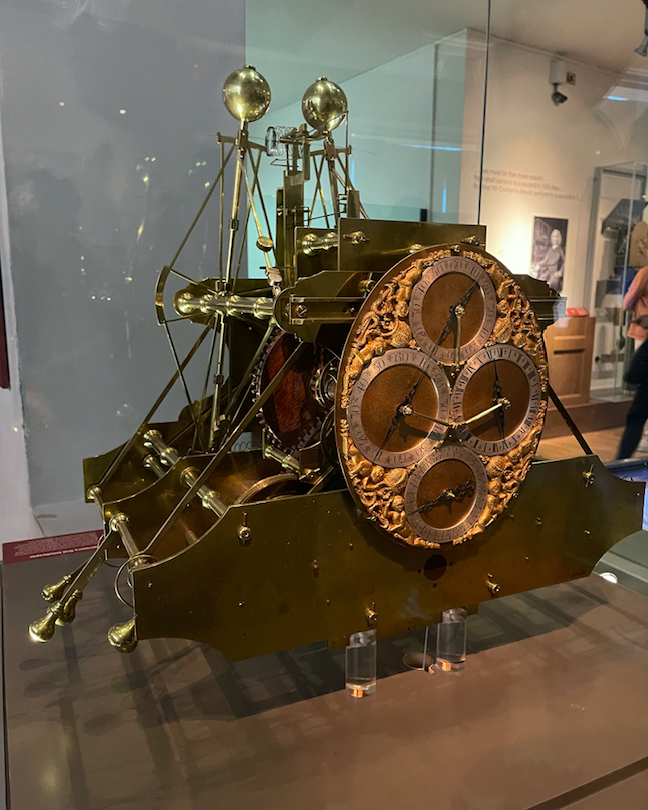
Why was this a problem to begin with?
- To determine longitudinal position at sea (east/west), one needed to know the time at the home port of departure (now Greenwich, England, or GMT for all) and compare it to the local apparent noon (sun at its zenith).
- To do that, one needed an accurate time piece.
- They existed on land, but none of the day could keep time at sea due to the motion of the ocean, as well as changes in humidity and barometric pressure.
- Until the problem was solved, vessels were constantly at risk of delayed or premature arrivals, getting lost, or worse, running aground. That last eventuality was the straw that broke the stiff upper lip of the land: a small armada was lost off the coat of England due to poor position reckoning.
The detailed history is best left to Dava Sobel, but suffice it to say it that this wasn’t an easy affair. Here’s a super-short summary.
In 1714, Parliament created the Board of Longitude and offered the prize.
In the 1720’s, Harrison created his first clock. It was huge, unwieldy, and elegant a/f – so much so that a fancy-lad clockmaker in England makes stunning replicas.
It worked well enough on a proper sea trial, and it was duly recognized by the Board, but there was room for improvement. A small sum was paid with the promise that another improved clock would be built.
It took three more iterations, decades of time, and some political jockeying to get it done…. but the fourth time was the charm. From a large machine, to a large pocket watch, Harrison created a consistently reliable chronometer and safe navigation was possible. Sadly, despite this accomplishment and also winning the king’s ransom of a prize, he died a bitter and broken man.
But, I was a happy fan at the Royal Observatory. I highly recommend anyone traveling to London take a side trip to Greenwich, which also has the Maritime Museum and the Cutty Sark. Easy on tube + rail. Harrison’s clocks might be the best part about the Observatory but there’s plenty more, including the touristy thing: standing on the Prime Meridian!
Again: read Longitude by Dava Sobel. Get the illustrated version. Fascinating and revealing. There’s also a Nova episode about it, and despite being a little campy with reenactments, it’s great. Sobel is interviewed in it.
We teach the basics of latitude and longitude work in our Coastal Navigation course, Start Sailing (ASA 105), including how to use lat/lon coordinates from a GPS to plot position on a paper chart. Old school blended with new.
